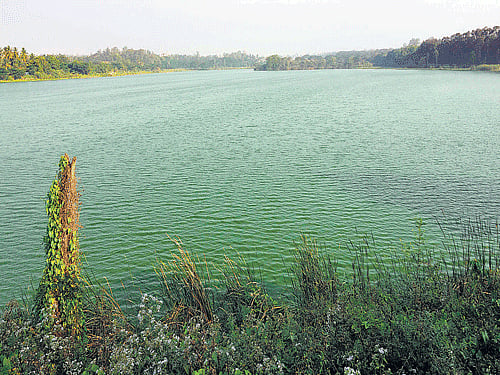
Considering the need of a lake for irrigation in parts of Mysore, King Mummadi Krishnaraja Wodeyar constructed a water body in 1864. This marked the origin of Mysore’s iconic Kukkarahalli Lake. The lake was spread over a vast area with feeder canals from all four directions. Feeder canals stretched as long as 25km, fetching rainwater to the lake from a much bigger catchment area.
The lake became a source of drinking water and irrigation. “Even industries got water supply from this lake,” informs, historian Nanjaraja Urs. With pristine water, clean environment and well-planned feeder canals, the lake became the princely state’s lifeline. Large number of migratory birds visited the lake every winter and made it a bird heaven.
Since 1900, water was supplied to Mysore, through pipelines. A check-dam built near Srirangapattana and Vani Vilas Water Works were the major sources of drinking water. Generation of Asia’s first Hydro-electric power in 1902 and
construction of Krishna Raja Sagara (KRS) Dam across River Cauvery are the major milestones in the history of Mysore.
However, these two developments spelt doom for the Kukkarahalli Lake. Both
irrigation and drinking water needs of Mysore then had a bigger source.
Availability of electric power lead to efficient distribution of water. As a result, the lake lost its significance. As the city limits expanded, human settlements emerged in the catchment area.
The tank bund became a dumping yard and sewage water was let into the lake. The lake was no longer serene and its neighbouring residents complained of foul smell. This lead to suggestions of closing the lake.
Restoration efforts
For many Mysoreans, Kukkarahalli lake is not a mere water body. They have an emotional attachment to it, intimately woven with the cultural life of the princely state: This was a favourite place of legendary literary personalities like
Kuvempu, RK Narayan, Sarvapalli Radhakrishnan and TS Venkannayya. The very thought of closing such an iconic lake was a cultural shock to the citizens.
Initial seeds of restoration were sown in 1986 by KS Hegde, the then Vice
Chancellor of Mysore University. He constructed a bund on the northern side of the lake to block sewage water entering the lake from that side. However, underground sewage water continued to flow to the lake from other parts and the lake was largely neglected, due to apparent lack of funds.
People’s movement
The movement to protect the lake was augmented in 2002 when public,
environmentalists, civic associations and students, took out protest marches and rallies demanding its restoration.
‘Kukkarahalli Lake Protection Committee’ was formed in the same year, under the leadership of Professor Jayaramaiah.
“Due to indiscriminate flow of sewage water to the lake for decades, the lake
water was totally contaminated. The dissolved oxygen level in the water was less than 4mg per litre (5mg per litre is essential to sustain life) and its aquatic life was in danger. To add to it, excess growth of blue-green algae produced a foul smell,” recalls Jayaramaiah.
The protection committee gave top priority to divert sewage water entering the lake from different channels. A discussion, regarding dumping of waste, with the city corporation, yielded results. To ensure that the ban on dumping waste was followed diligently, student groups were formed to keep vigil. Dumping of waste stopped completely, over a period of six months. Now, tall mesh fencing has been erected at this place along the road so that vehicles cannot unload the debris into the lake.
As the feeder canals have been encroached, there was no fresh water flow to the lake. The committee also worked on increasing rain water flow into the lake. It committee took the matter to Mysore Urban Development Authority which
ensured diversion of rain water from university campus.
Further steps
After continuous efforts of the committee, Mysore City Corporation laid underground pipeline from Vani Vilas Waterworks to the lake to direct backwash water. Due to this, Kukkarahalli Lake has been receiving 10 lakh litres of fresh water everyday. Awareness programmes to stop immersion of Ganesha idols, and bird hunting activity, has also helped.
Over the past few years, steps taken by the committee have started giving good results. However, the underground sewage water flow has not completely stopped. “Diverting sewage completely away from the lake is our present agenda. We
are working towards this,” informs Jayaramaiah, earnestly. Planting saplings around the lake, setting up water treatment plant, strengthening bunds of the small island where migratory birds roost, providing fountains at few points to purify water are some of the other priorities of the committee.
